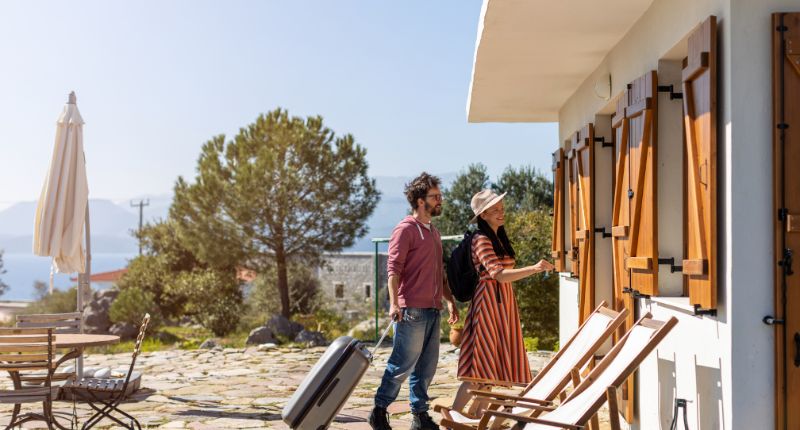
- Low rental vacancies spark short-stay regulation debate, but questions raised over efficacy.
- Short-term rentals make up a fraction of the market, switching to long-term is unrealistic.
Australia’s rental market has been under scrutiny as rental vacancies continued their free fall.
Vacancy rates across the nation have been floating around the one per cent mark for a while, with the latest from SQM Research recording a national vacancy rate of just 1.2%.
Australian vacancy rates
Perth’s rental market is one of the tightest in the country, and while there were recent positive signs for the market, vacancy rates were still abysmally low.
According to SQM Research, the latest vacancy rate for Perth is 0.4%, with Domain’s data putting Perth vacancies even lower, at 0.3%.
Perth vacancy rates
How can these rental challenges be dealt with? Among the many often discussed solutions is to clamp down on short term rentals, also referred to as short-stay accommodation.
Short term rentals are just a fraction of Perth’s rental market
A recent review of the short stay accommodation market by the Real Estate Institute of Australia (REIA) found that Western Australia was home to 10,091 short-term rentals in the March 2023 quarter. Regional Western Australia played host to 52.7% of the places, while Perth was home to 47.3%.
Of these, only 8,056 were entire dwellings that could be suitable for use as long-term rentals.
Real Estate Institute of Western Australia (REIWA) CEO, Cath Hart, said that despite a 16.2% year-on-year rise in short-stay entire dwellings, they only comprised a mere fraction of total dwellings: 0.4% in Perth and 1.7% regionally. The ratio of short-stay entire dwellings to private rental dwellings was also generally low, two in every hundred homes in Perth, and 12.1 in every 100 dwellings in regional WA.
“In Perth, the City of Stirling had the highest number of short-stay entire dwellings at 441, when you compare that to the number of rented dwellings – nearly 30,000 according to ABS Census data – it’s a very small portion.”
Cath Hart, REIWA
“Admittedly it is a more challenging situation in some high tourism regional areas. For example, Busselton had the highest number of short-stay entire dwellings at 1,320, compared to over 3,500 occupied rented dwellings.”
Switching to normal renting not always realistic
“Supply is the key issue facing the rental market, and there are frequent suggestions that if short stay accommodation providers were ‘encouraged’ to switch to the long-term market, the problem would be solved,” said Hart.
“It’s a nice idea but unrealistic.”
Cath Hart, REIWA CEO
The solution is not that simple, with Hart noting that regardless of incentives or disincentives, not all entire short stay homes can be put on the private rental market.
“For example, there are farmers with a property in Perth that they use when they come to town. They may also use it for short stay accommodation between their visits. They won’t make the switch,” said Hart.
“Similarly, there are people who own holiday homes and place them on the short-stay market in between their own use.
“And then we have FIFO workers who may let their property for a bit of extra money while they are away on a shift.
Hart highlighted the fact that the magnitude of Perth’s rental market problem was much larger than 8,000 properties.
“Our modelling suggests between 18,000 – 20,000 additional rental properties are required to see WA return to a balanced market and the majority of these are needed in Perth.”
Will short stay restrictions work?
Renting properties short-term is often viewed as a profitable alternative to long-term renting, and the data backs this up.
In the March 2023 quarter in Perth, the gross annual income of a two-bedroom private rental dwelling was $25,800.
On average, it takes 132 days of successful hosting to make the same amount in the short-stay accommodation market. In regional WA, it takes 107 days.
Some have suggested that capping the number of days used for short-stay accommodation will push property owners into converting their properties into long-term rentals, but there’s a salient point to consider:
“Capping usage to 120 days, or four months a year, doesn’t mean the home could be available as a long-term rental for the remainder of that 12 months.”
Cath Hart, REIWA
“Very few short-stay dwellings are let for 120 days in a row, in general, they are used during holiday periods throughout the year. They would be unable to be used as a long-term rental in between stays.
“Secondly, if you wanted to make short-stay financially non-viable, based on the data from the report you would have to implement a very low cap. This could impact tourist areas where short stay accommodation provides a necessary service and supports local businesses.”
Supporting registration
Hart said REIWA supported a registration scheme, which will provide for improved regulation and an overview of the entire market, support residents living in tourist areas, and help create greater uniformity in how the short-term rental accommodation sector is managed throughout WA.
“A registration scheme is already in place in the City of Busselton where a strict code of conduct applies to owners, managers and tenants,” she says.
“This ensures an appropriate standard of management and minimises the risk of such accommodation causing a nuisance to neighbours.
“The rules place a limit on the number of guests after 10 pm, nominate a maximum number of cars to be parked at the property and require managers to have their contact details visible from the street so people know who to contact when there is an issue.”







